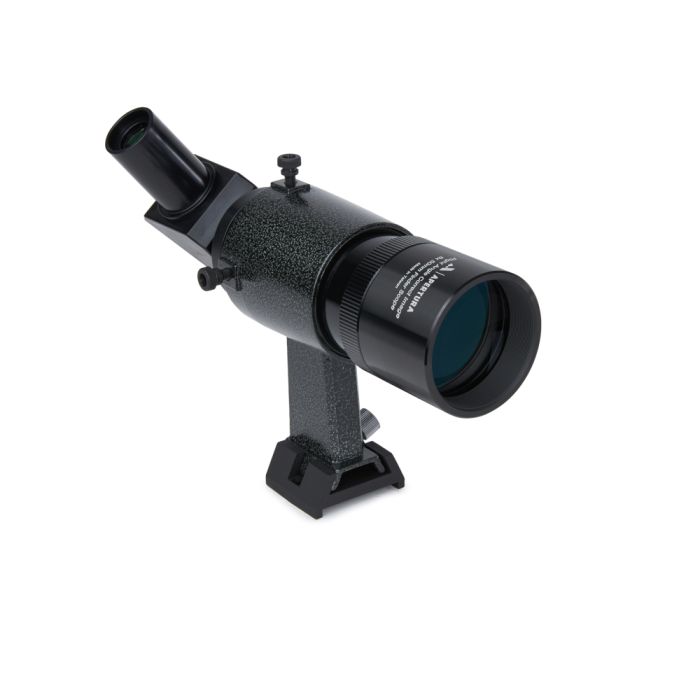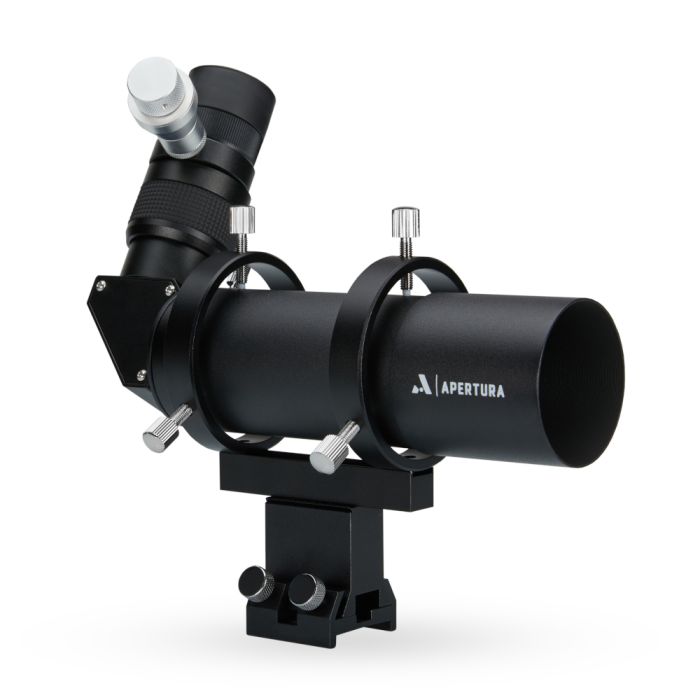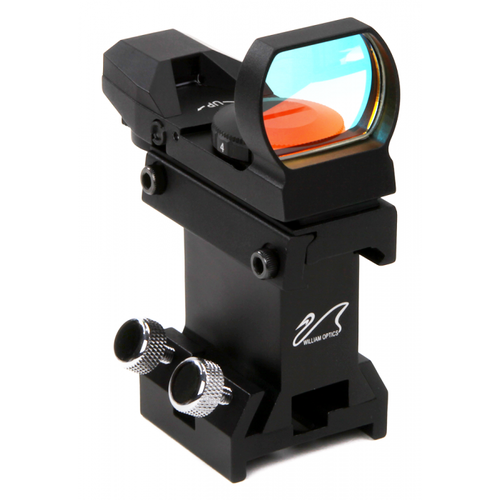This instructional video provides a clear, step-by-step guide for aligning your telescope’s finder scope, an essential process for accurate stargazing. Proper finder scope alignment ensures that what you see through the finder matches the field of view in your main telescope, making it easier to locate celestial objects quickly and precisely. The tutorial covers several alignment techniques that apply to different types of finder scopes, from traditional optical models to red-dot and reflex sights. With this knowledge, you'll gain the confidence to position your telescope efficiently, helping you get the most out of every observing session. Whether you're a beginner or refining your setup, mastering this alignment process significantly improves viewing accuracy and ease of navigation across the night sky.
Beyond the Apertura models featured in the video, many respected brands offer finder scopes known for their optical clarity, reliable construction, and user-friendly design. These include options with illuminated reticles, interchangeable brackets, and wider fields of view—each offering different benefits based on your telescope type and observing style. Finder scopes play a vital role in telescope setup, allowing for precise star-hopping, quicker alignment, and smoother tracking.
Highlighted Products
Other astronomers' finder scope brands provide high-quality optics and consistent construction that provide exact alignment and simple navigation of celestial objects. These flexible instruments improve viewing conditions and satisfy varied tastes for amateur and professional astronomers by complementing several telescope configurations.
Tele Vue Qwik-Point Finder
Compact telescopes would be a perfect companion for the lightweight and portable Tele Vue Qwik-Point Finder sighting tool. Using the same optical concept as the Starbeam finder, it offers basic and exact alignment for midnight star hopping and daylight viewing. The QRD-1006 dovetail quickly attaches the Qwik-Point into Synta, Orion, or Vixen-style finder shoes. It runs at a fixed, brilliant level fit for most viewing settings without adjustable brightness.
Baader Planetarium Sky Surfer III 30 mm Red Dot Finder
Finding things in low-light or star-filled sky is a breeze with the Baader 30 mm Sky Surfer III Red Dot Finder, which outperforms the competition and costs far less. A hefty 30 mm optical aperture and anti-reflective lens coatings keep the image bright, allowing for a clear, undistorted red dot. The three mounting bases allow for varied installation, and the device is adjustable in elevation, azimuth, and dot intensity. The Sky Surfer III's 3V lithium battery ensures dependable performance and makes installation a breeze.
Celestron StarPointer Pro Finderscope
Astronomers would benefit significantly from the Celestron StarPointer Pro Reflex Finder, an upgrade over the old-fashioned red dot finders. It emits two circular LED reticles rather than a single dot, making centering and illuminating celestial objects easier. A large field of vision, provided by the 40 mm optical window, facilitates star-hopping and the rapid localization of objects. With the Celestron RSR Binocular Tripod Adapter, you can attach the StarPointer Pro to binoculars for even more precise object localization.
Apertura 8x50 Right Angle Finderscope and Bracket
The Apertura 8x50 Right Angle Finderscope with Bracket offers a bright, wide field of view to help easily locate celestial objects. Its right-angle design provides comfortable viewing, especially when aiming at objects near the zenith. The included bracket fits most standard telescope mounting shoes securely. With sharp optics and a crosshair reticle, it makes star alignment and target acquisition more efficient.
Apertura 10 x 50 Right Angle Finder Scope with Illuminated Reticle Eyepiece
The Apertura 10x50 Right Angle Finder Scope with Illuminated Reticle Eyepiece provides a clear, wide field of view for locating objects in the night sky. Its right-angle design makes it easier to observe targets high overhead without neck strain. The illuminated reticle helps center stars or planets accurately, even in low-light conditions. Its white finish adds a sleek look and pairs well with a variety of telescope setups.
More About This Category
The accuracy and effectiveness of telescope technology are crucial for exploring and deciphering the secrets of the vast cosmos. Of the many parts that make a telescope system work properly, the Apertura finder scope is among the most important for novice and expert astronomers. Its capability to improve the experience of seeing, expedite celestial navigation, and offer crucial assistance for identifying and monitoring far-off objects makes it significant.
The Apertura finder scope is a small secondary telescope installed on the primary telescope tube. It is commonly referred to as just a finder or finder scope. Its primary purpose is to help users find certain celestial objects in the night sky viewable through a main telescope. This scope is a great tool for precise and speedy celestial navigation because it usually has a larger field of view and lower magnification than the primary telescope.
The improved simplicity of object location is one of the main benefits of using an Apertura finder scope in a telescope setup. It can be challenging to navigate the night sky, particularly for inexperienced observers or when attempting to locate dim or elusive celestial objects. In addition to providing a larger field of view than higher-powered eyepieces on the main telescope, the finder scope serves as a guide, making it easier to locate objects.
Another important benefit of a finder scope is that it can offer an additional view to the primary telescope, making dual observation possible. Maintaining a broader perspective, whether studying planetary alignments, star clusters, or deep-sky objects, is made easier with the help of this dual-view feature. This feature allows astronomers to maintain situational awareness of their celestial surroundings.
Apertura has a fantastic selection of high-quality finders with excellent features. These Apertura finder scopes have gained popularity within the astronomical community for their outstanding performance and reliability. Here’s a short list of leading Apertura finder scopes known in the astronomy community.
1.Apertura 8x50 optical finder- has an easy-to-adjust two-screw bracket and offers a 5.6° field of view.
2.Apertura 10x finders- include a 1.25" crosshair eyepiece with an illuminator and a solid six-adjustment screw bracket.
3.Apertura Multi-Reticle Red Dot Finder- is an excellent choice with four reticle styles:
A red dot, a crosshair, a red dot with a crosshair, and finally, a circle with a center dot.
.
Being known to be a beneficial and worthy addition to a setup, maximize the benefits of an Apertura finder scope with some useful tips below.
Proper alignment between the finder scope and the main telescope is crucial.
Ensure that the finder scope's field of view overlaps with the main telescope's.
Regularly calibrate the finder scope's alignment.
Practicing patience and utilizing star-hopping techniques is essential when observing with an Apertura finder scope. Star hopping involves using bright stars or easily identifiable celestial landmarks as stepping stones to reach the desired target. This method enhances observational skills and reduces reliance on automated tracking systems, making the stargazing experience more immersive and rewarding.








